One hour
That’s how long it takes to forget half of what you’ve learned on a course. After a day, 70% of the learning has vanished. After a week, 75%.
For companies who invest money in teambuilding events, that’s a serious lack of ROI.
And success depends on retaining and applying that learning. Given the complexity of the problems facing organisations today, effective teams are essential to growth and competitive advantage. They’re the powerhouses of organisations – the most powerful weapon in a company’s arsenal.
Teams aren’t just built, they need to be analysed, fine-tuned, bolstered, re-energised, deconstructed and reconstructed. And if we don’t accept this curation as crucial to the health of teams, the cracks will begin to show.
The problem with some tools that give us insights into our personalities or sort us into ‘types’ is that they don’t begin to tackle this important work, because they have little or no bearing on what we do, day to day.
They’re often well-presented – we can label ourselves with colours or symbols – but how do we carry that information forward? How do we apply it to boost performance and revenue when we get back to work?
Belbin is different
We measure what people do – not who they say they are – so we’re beginning with what really happens on the ground, not what’s going on in one person’s head, which may or may not reflect everyone else’s reality.
So, what can you do to lock in ROI and ensure that your team’s Belbin learning takes root back in your workplace?
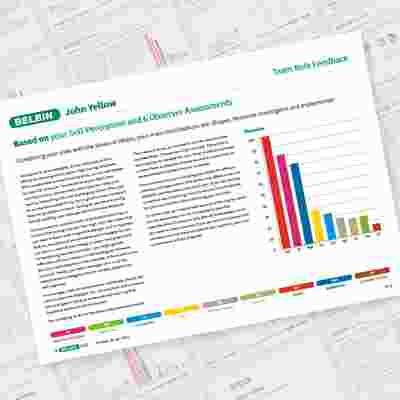
1. Revisit the Belbin Individual reports
Belbin Individual reports are a great starting-point for those new to Belbin. They contain the advice and guidance to help people articulate and hone their strengths, and to see where they fit within the team.
When Belbin Team Roles are introduced at a teambuilding event (especially if the learning only forms part of the day), there’s barely time to scratch the surface of the report, so it’s important that team members take time to digest the content after the fact, and are given the space to reflect and ask questions arising.
2. Take it to the team
Once you know your individual players, it’s time to ‘think teams’. Belbin theory is all about understanding each member’s unique contribution to a team, and the Belbin Team Report is a great next step for teams wishing to build on their learning.
The Belbin Team reports collate individual data to get people thinking about who does what and why, and how the team culture might look. Rather than being prescriptive, the reports provoke questions, and instigate discussion and reflection.
Does someone take on a certain kind of work for historical reasons? Is there tension between someone’s Team Roles and their functional role? If so, is anyone else more suited to the task or willing to grow into it?
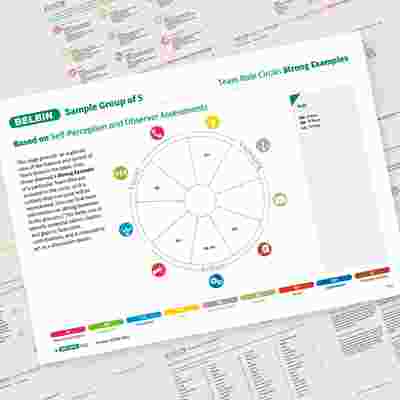
The discussion arising is a great opportunity to consolidate the team’s understanding of Team Roles and to apply that learning in a way that directly benefits the team’s function.
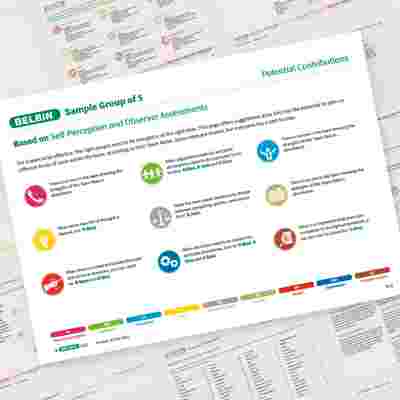
3. Make meetings count
Meetings are a prime place to use the language of Belbin, for two reasons.
Firstly, lots of different kinds of work are likely to be under discussion, so there’s room to talk about what each piece needs and who might be best suited to that stage.
For example, a project at its inception might need Plant and Resource Investigator input to generate ideas. The planning stage is likely to require Monitor Evaluator and Implementer strengths.
Secondly, meetings can offer a microcosm of Team Role behaviours in action. Is the chair playing a Co-ordinator role by seeking consensus and airing different views, or playing the Shaper by pointing out the deadline and demanding concrete actions with accompanying dates?
Once the team can identify contributions successfully, can they begin to use the Team Role language to articulate what they need? For example: “I think we need to ME (Monitor Evaluator) this at a later date”. Having a ready shorthand (so long as the understanding is there too) can defuse tension, save valuable time and decrease frustration.
As the team sees the value in using this language, it gains purpose so is prioritised in memory.
4. The team that plays together stays together
A key finding from our most recent survey was that customers who purchased our team building games alongside the reports were more easily able to keep Belbin current and continued deriving benefits from Team Roles for longer after the initial event or exercise.
Experiential learning consolidates theoretical understanding and offers a practical illustration of Team Roles in action.
You can find out more about our games and exercises here.

5. Become a Belbin champion
Belbin doesn’t need a gatekeeper – in fact, it works best when used on the ground with teams that can put the practical advice into practice straightaway.
So, be the change you want to see in your team or organisation. Deploy the language of Belbin day-to-day to familiarise others with the various roles. Understand more about Belbin and the myriad ways the theory and reports can be used - it's not just for teams. Why not become Belbin Accredited?
Speak to other teams about your experiences of the benefits and make Belbin a cultural movement in your organisation, rather than your team’s secret weapon. Belbin is at it's best when the language is used and shared by all - how else will you know where those Completer Finishers are hiding?
6. Keep your knowledge current
To beat the forgetting curve, you need to refresh your knowledge regularly.
We have a wealth of information and resources on our website, including webinars, articles and team session ideas. Sign up to our newsletters and follow us on social media to make sure you don't miss out.
We also have a number of training courses and events designed to help you make the most of the reports and exercises. We also have just launched the 3rd Edition of Team Roles at Work - the Belbin facilitators friend!
And we’re only ever a phone call away!
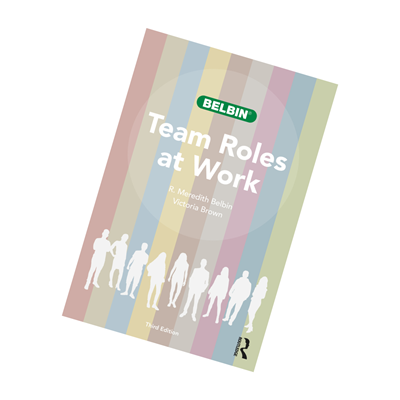
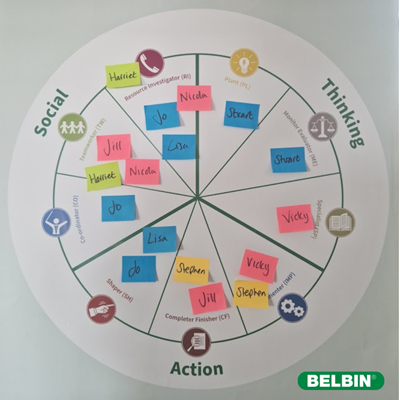
7. Keep Belbin in your eyeline
Visual prompts can be really effective in embedding learning.
Why not draw up a Team Role Circle at your team’s daily or weekly meeting, or for different projects? This can give you an at-a-glance view of the strengths available to the team and keep people focused on their contributions.
You can use sticky notes to move people between segments, making the point that our contributions aren’t static. If someone is playing out of role, acknowledge this effort and stress that the change won’t be permanent. It also helps the whole team see each others strengths - useful when planning the next piece of work, or for working out why there are some tensions flaring!
8. Delegate more effectively
If you’re managing a team, Belbin can help you delegate more effectively.
Team Role language is a succinct way to clarify the kind of contribution you need, and excluding behaviours which could be counterproductive.
If you ask someone to “CF” a document, you’re asking them to play a Completer Finisher role, checking the details and identifying any errors or problems. You’re not asking them to rewrite the proposal with a new idea (Plant) or even to analyse potential problems at a broader strategic level (Monitor Evaluator). We wrote an article to help you to embed the language so that you can talk fluent Belbin!
Using the language of Team Roles can help depersonalise the issue: it’s not that those other contributions aren’t valid, it’s just that they’re not what’s needed right now.

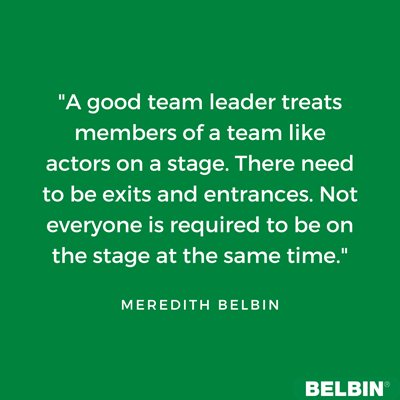
9. Break new ground
Many teams use Belbin once they’re already in situ, but if you have the luxury of building a new team (perhaps a sub-team or pairing for a particular project), ensure you take Team Role behaviours into account.
This is a topic all of its own, but suffice it to say that you should keep the team small, consider the team’s objectives carefully – you don’t always need all Team Roles present — and aim for balance.
Our article on project teams has more.
10. Take the pain out of troubleshooting
Belbin uses a lexicon of behavioural styles and preferences. This can help the team investigate why things are going wrong, without making it personal.
The Team Role Averages Report analyses the team’s culture, so it’s ideal for spotting trends in how the team functions and responds to challenges.
This helps boost accountability and psychological safety (the ability to be candid and admit mistakes without fear of blame) and keeps things constructive.
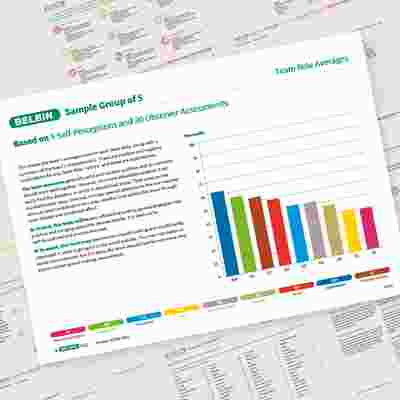
Use it or lose it
After ‘first contact’, it takes time for a team to become ‘fluent’ in Belbin. It doesn’t happen by magic. The more the Team Role language is used and applied, the greater the chances of its full benefits being realised.
We’d love to hear how you use Belbin day-to-day in your team, so leave us a comment or drop us a line.
And as always, if you need anything Belbin, you can find us here.
Join over 25,000 people who receive our research and insights once a week. Unsubscribe any time.
Discover individual and team strengths using Belbin Team Role reports

Belbin Individual Reports
Before you can analyse your teams, you need to look at each individual's contribution. So, the first thing you will need to do is to generate a Belbin Individual report for each member of the team.
Find out more
Belbin Team Reports
Whether you're forming a new team, introducing new people to an existing team, or trying to resolve issues within a team, a Belbin Team report can help you to manage it.
Discover more
Why Use Belbin?
Belbin Team Roles are used to identify behavioural strengths and weaknesses in the workplace. Whether developing people, resolving conflict or fine-tuning high performance...
Read more